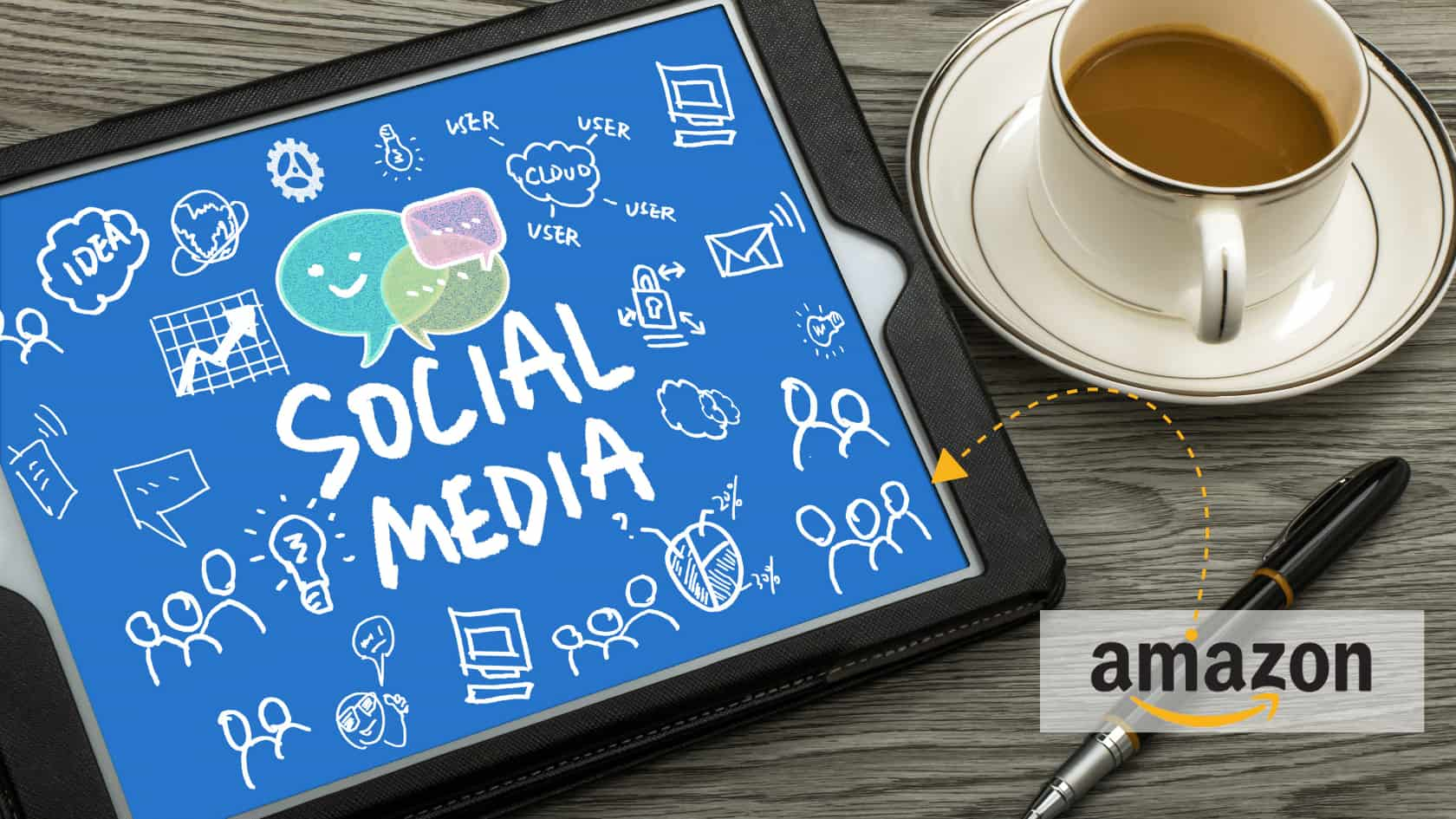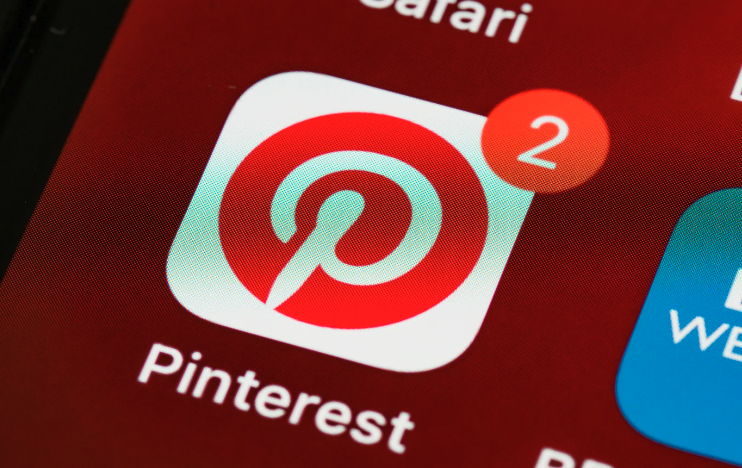Amazon isn't just a giant in online shopping; it's also a master of using social media to connect with customers and boost sales. Whether you're a big company, a small business owner, or just curious about how Amazon dominates not just in warehouses but on social feeds, this guide is your backstage pass.
We're diving deep into Amazon's playbook to reveal the strategies and best practices that have helped it succeed on platforms like Instagram, Twitter, and Facebook. From engaging content to clever marketing tricks, Amazon knows how to make its products irresistible online.
Want to learn how to make social media a powerhouse for your business? Keen to understand what makes Amazon's approach so effective?
Keep reading. We've broken down their tactics into simple steps and tips that anyone can start using today. Let's explore the secrets to social media success, inspired by one of the biggest names in the game.
Ready to take your Amazon selling to the next level with Advanced PPC Management? Try Scale Insights - Free 30-day trial* today!
*No Credit Card Required
Key Takeaways
-
Amazon has a strong social media strategy that involves engaging with customers and promoting its products.
-
Amazon leverages various social media platforms, including its own Spark network, Facebook, Twitter, and Instagram.
-
Social media has helped Amazon grow its customer base and build stronger relationships with its customers.
Amazon's Social Media 4 Strategies for Engagement
If you're wondering how Amazon manages to stay ahead of its competition, you might want to take a closer look at the company's social media strategies for engagement. Amazon has been able to leverage social media platforms to create a loyal and engaged audience, and the following are some of the strategies that the company uses to achieve this.
1. Influencer Partnerships
One of the most effective ways that Amazon engages with its audience on social media is through influencer partnerships. The company partners with influencers across various social media platforms to promote its products and services. By doing so, Amazon is able to tap into the influencer's audience and leverage their trust and credibility to drive sales.
2. Targeted Advertising
Another effective strategy that Amazon uses to engage with its audience on social media is targeted advertising. The company uses data to identify its target audience and creates ads that are tailored to their interests and preferences. This ensures that the ads are relevant and engaging, which increases the likelihood of the audience taking action.
3. Social Media Contests
Amazon also uses social media contests to engage with its audience. The company creates contests that encourage users to share their experiences with Amazon products and services. By doing so, Amazon is able to create a sense of community and foster engagement with its audience.
4. User-Generated Content
Finally, Amazon leverages user-generated content to engage with its audience on social media. The company encourages users to share their experiences with Amazon products and services and even features user-generated content on its social media channels. By doing so, Amazon is able to create a sense of community and foster engagement with its audience.
Leveraging Social Media Platforms
When it comes to selling on Amazon, leveraging social media platforms can be an effective way to expand your reach and drive sales. In this section, we'll explore some strategies for utilizing Instagram, Facebook, TikTok, YouTube, Twitter, and Pinterest to promote your Amazon products.
Instagram and Facebook Strategies
Instagram and Facebook are two of the most popular social media channels, with billions of users worldwide. To leverage these platforms for your Amazon business, consider the following strategies:
-
Create an Instagram and Facebook business account: This will allow you to access features like Instagram Shopping and Facebook Shops, which allow you to tag your products in posts and stories and make them shoppable.
-
Post high-quality images and videos: Visual content is key on Instagram and Facebook, so make sure your posts are eye-catching and well-crafted. Use a mix of lifestyle shots and product photos to showcase your products.
-
Utilize influencer marketing: Partner with influencers in your niche to promote your products to their followers. This can be a powerful way to reach new audiences and drive sales.
Expanding Reach on TikTok and YouTube
TikTok and YouTube are two of the most popular video-based social media platforms, with millions of users tuning in every day. To expand your reach on these platforms, consider the following strategies:
-
Create engaging video content: TikTok and YouTube are all about video content, so make sure your videos are engaging, informative, and entertaining. Use a mix of product demos, tutorials, and behind-the-scenes footage to showcase your products.
-
Partner with influencers: Influencer marketing is also effective on TikTok and YouTube. Partner with influencers in your niche to create sponsored content that promotes your products.
-
Use hashtags: Hashtags are a powerful way to increase the visibility of your videos on TikTok and YouTube. Use relevant hashtags in your video titles and descriptions to make your content more discoverable.
Utilizing Twitter and Pinterest
Twitter and Pinterest are two social media channels that are often overlooked by Amazon sellers, but they can be effective ways to drive traffic to your Amazon listings. Consider the following strategies:
-
Use Twitter to engage with your audience: Twitter is a great platform for engaging with your audience and building relationships. Use it to answer customer questions, share news and updates, and promote your products.
-
Create Pinterest boards: Pinterest is a visual platform that allows users to save and share images and videos. Create Pinterest boards that showcase your products and link back to your Amazon listings.
-
Use Rich Pins: Rich Pins are a type of Pinterest Pin that includes extra information, like pricing and availability. Use Rich Pins to make your products more discoverable on Pinterest.
Ready to take your Amazon selling to the next level with Advanced PPC Management? Try Scale Insights - Free 30-day trial* today!
*No Credit Card Required
Amazon On Social Media
If you're an Amazon user, you probably know that Amazon has a strong presence on social media. Amazon uses social media platforms to connect with customers, promote products, and offer customer support. Here are the social media platforms Amazon is currently using:
-
Facebook: Amazon has an active Facebook page with over 16 million followers. The page is used to promote products, share news, and offer customer support.
-
Twitter: Amazon has a verified Twitter account with over 2.5 million followers. The account is used to share news, promotions, and customer support.
-
Instagram: Amazon has an active Instagram account with over 2 million followers. The account is used to promote products and share user-generated content.
-
YouTube: Amazon has an official YouTube channel with over 1.5 million subscribers. The channel is used to promote products, share tutorials, and offer customer support.
-
Twitch: Amazon owns Twitch, a live streaming platform for gamers. Twitch is used to promote Amazon products and services, as well as stream live events and gaming tournaments.
Amazon's social media presence is not limited to these platforms. Amazon also has a presence on LinkedIn, Pinterest, and Snapchat, although these platforms are not as active as the ones listed above.
Amazon's social media strategy is focused on engaging with customers and promoting products. Amazon uses social media to share news and promotions, showcase products, and offer customer support. Amazon's social media accounts are also used to share user-generated content, such as customer reviews and photos.
How Social Media Has Helped Amazon?
Social media has been a game-changer for Amazon, allowing the company to connect with customers on a more personal level and build brand loyalty. Here are some ways in which social media has helped Amazon:
-
Increased Brand Awareness: Amazon has leveraged social media to increase its brand awareness and reach a wider audience. By sharing engaging content and promotions on social media platforms like Facebook, Twitter, and Instagram, Amazon has been able to attract new customers and keep existing ones engaged.
-
Improved Customer Service: Amazon has been able to use social media to improve its customer service. By responding to customer queries and complaints on social media platforms, Amazon has been able to address customer issues in a timely and efficient manner.
-
Increased Sales: Social media has helped Amazon drive sales by promoting its products and services to a wider audience. By creating targeted ads and promotions on social media platforms, Amazon has been able to increase its sales and revenue.
-
Better Customer Engagement: Social media has allowed Amazon to engage with its customers in a more meaningful way. By creating interactive content like polls, quizzes, and contests, Amazon has been able to keep its customers engaged and interested in its products.
-
Improved Customer Insights: Social media has provided Amazon with valuable insights into its customers' preferences and behavior. By analyzing social media data, Amazon has been able to better understand its customers and tailor its products and services to meet their needs.
Social Media Advertising and Sales
Social media advertising is a powerful tool to increase sales and reach your target audience. Amazon provides various advertising options to promote your products, such as Sponsored Products, Sponsored Brands, and Sponsored Display ads. These ads are displayed on Amazon search results pages, product detail pages, and other relevant pages.
By using Amazon's advertising services, you can reach potential customers who are searching for products similar to yours. You can also target specific keywords, products, or categories to increase the visibility of your products and drive more sales.
Benefits of Amazon's Advertising Services
One of the benefits of Amazon's advertising services is that you can track your ad performance and adjust your campaigns accordingly. This allows you to optimize your ad spend and maximize your return on investment.
It's important to keep an eye on your competitors and their advertising strategies. By analyzing their campaigns, you can identify potential opportunities to improve your own advertising efforts. You can also use Amazon's Demand Side Platform (DSP) to run display ads on Amazon and other websites to reach a wider audience.
Paid Ads on Social Media
Paid ads on social media can also be an effective way to increase sales. By using platforms like Facebook, Instagram, and Twitter, you can target specific audiences based on demographics, interests, and behaviors. This allows you to reach potential customers who may not be actively searching for your products on Amazon.
Ready to take your Amazon selling to the next level with Advanced PPC Management? Try Scale Insights - Free 30-day trial* today!
*No Credit Card Required
Analyzing the Impact of Social Media on Amazon's Growth
Social media has played a significant role in Amazon's growth over the years. With over 2.8 billion social media users worldwide, Amazon has leveraged social media platforms to reach a broader audience and enhance the customer experience.
Amazon's social media presence is extensive, with active accounts on popular platforms such as Facebook, Twitter, Instagram, and LinkedIn. Through these channels, Amazon engages with its customers, fosters a community of brand advocates, and showcases its products and services.
How to Effectively Utilize Social Media?
One way Amazon has effectively utilized social media is through influencer marketing. Amazon partners with influencers who promote their products to their followers, increasing brand awareness and driving sales. For example, Amazon partnered with lifestyle blogger Aimee Song to promote their fashion line, which resulted in increased sales and brand recognition.
Another way Amazon has utilized social media is through user-generated content (UGC). Amazon encourages customers to share their experiences with their products through reviews, photos, and videos. This UGC helps build trust and credibility with potential customers and provides valuable feedback for Amazon to improve its products and services.
Amazon has also launched its social media platform, Amazon Spark, which is designed to create social engagement that leads directly to product purchases. Residing within the Amazon app, Spark allows customers to discover new products, share their experiences, and follow other customers with similar interests.
What Is Amazon Spark All About?
Amazon Spark, launched in July 2017 and ended in 2019, was Amazon's attempt to mix social networking with shopping. Only for Prime members, it lets users follow interests, share photos, and chat, aiming to make finding and buying products easier and more fun. Think of it as Instagram but focused on shopping. People could post pictures, talk about their purchases, and even buy products directly from the app.
However, Spark didn't catch on as hoped. It struggled to stand out against big social networks and couldn't attract enough users. Amazon shut it down but learned from the experience. Today, Amazon continues to explore ways to make shopping more social and engaging, like working with influencers and hosting live streams. Spark showed Amazon the potential of combining shopping with social features, even if the project itself didn't last.
Conclusion
In conclusion, Amazon's social media strategy has been successful in increasing the visibility of its products among potential customers. By leveraging social media advertising, Amazon sellers can target specific demographics, which has helped drive discovery and sales.
Amazon Posts, a social media-like feature, has also enabled brand owners to share content with their audience on Amazon's mobile shopping app and selected product detail pages. This feature replicates the experience of browsing a social media feed, making it easier for customers to discover new products and brands in a familiar, engaging format.
Furthermore, Amazon has partnered with several micro and macro-influencers to engage with its audience better on various social media platforms such as Facebook, Instagram, Twitter, and YouTube. This has helped Amazon leverage all available channels and engage with its audience better.
Looking ahead, Amazon's social media strategy is likely to continue to evolve and adapt to changing consumer behavior. With the rise of Gen Zers spending more time on social media, Amazon sellers will need to leverage influencer marketing and social commerce to drive discovery and sales.
Looking to elevate your Amazon sales? Explore Scale Insights: the most adaptable and clear-cut Amazon PPC software available. Start your 30-day free trial and witness your business soar!
Ready to take your Amazon selling to the next level with Advanced PPC Management? Try Scale Insights - Free 30-day trial* today!
*No Credit Card Required
Frequently Asked Questions
Is Amazon a Social Media Platform?
Amazon is primarily an online marketplace, but it also has a social media presence. It uses various social media platforms to engage with customers and promote its products and services.
What Form of Media Does Amazon Use?
Amazon uses different forms of media to reach its audience, including text, images, videos, and live streams. It also partners with social media influencers to promote its products and services.
How Social Media Has Helped Amazon?
Social media has helped Amazon to increase brand awareness, engage with customers, and drive sales. It has also enabled Amazon to collect valuable feedback from customers and improve its products and services.
Does Amazon Have Its Own Social Media Platform?
Amazon does not have its own social media platform, but it has launched several social media features and services. For instance, it has launched Amazon Live, a live-streaming service that allows brands and influencers to showcase their products and engage with customers in real-time.
What is Amazon Digital Media?
Amazon Digital Media refers to the company's digital media services, including Amazon Prime Video, Amazon Music, and Kindle eBooks. These services allow customers to access a wide range of digital content, including movies, TV shows, music, and books.
Are Facebook and Amazon Connected?
Facebook and Amazon are not directly connected, but they have partnered on several initiatives. For example, Amazon has integrated Facebook's Messenger service into its platform, allowing customers to receive order notifications and customer support via Messenger. Additionally, Facebook has launched a shopping feature that allows users to browse and purchase products directly from Amazon within the Facebook app.



 Scale Insights Team
Scale Insights Team




